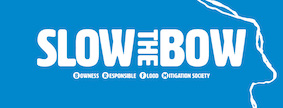After the conclusion of the City’s Bowness Barrier feasibility study, there are two conclusions with respect to the estimated cost of the proposed overland flood barrier:
- the estimated cost per kilometre of barrier has more than doubled since its inception; and
- the barrier is a waste of tax dollars given 100s of homes within the flood fringe in Bowness will not be protected from flooding even with the barrier as proposed (Hydrogeological Characterization and Groundwater Flow Modelling Report, January 2021, Klohn Crippen Berger).
The cost
The original barrier design was to be approximately 3.9 kilometres in total divided over two sections, constructed on 130 private properties and estimated to cost $24.7M plus a 50% buffer for accuracy (Permanent Flood Barrier Assessment Report, April 2018, Associated Engineering).
In January 2021, the City of Calgary revised the barrier footprint to 1.9 km total length divided over two sections, on 75 private properties and estimated to cost upwards of $35M (depending on the final barrier alignment and land costs). Details can be found in the Bowness flood barrier: Feasibility Study Community Information Booklet (City of Calgary, January 2021).
The estimated costs per kilometre have more than doubled since inception.
One can look to Rocky View County and the Bragg Creek Barrier as a recent example of how costs can be grossly underestimated (https://www.rockyview.ca/bragg-creek-flood-mitigation#LatestNews).
The original budget to construct a flood barrier of similar length in a rural setting came in at $32.8M (to be spent in two stages). In October 2019 Rocky View County closed their tender for construction and the lowest bid exceeded the construction budget allocated by the Province. In April 2020, the Government of Alberta contributed additional funds to allow the project to proceed, with an updated budget of $42.2M. The contract for construction was awarded and construction began in June 2020.
You should expect that the Bragg Creek berm should be less costly to build than the Bowness berm for the following reasons:
- it has no storm water management system requirements;
- construction will occur in a rural setting so the land acquisition costs are expected to be lower; and
- physical access to the river bank is expected to easier than it will be in Bowness.
BRFM believes that the City’s estimate for land acquisition is wildly underestimated. The estimate is based on the expectation that the City will negotiate easements with all 75+ property owners whose land is required for the project. The majority of property owners do not support the project and therefore the City will incur additional costs in legal fees and as a result of expropriation.
No benefit
It’s important to understand the proposed barrier is intended to limit the effects of overland flooding only and for smaller floods, nothing like the flood of 2013. According to the most recent groundwater modelling by Klohn Crippen Berger (December 2020) and by Associated Engineering (April 2018) very few properties will be protected by the proposed barrier. Please see the maps described in The Berm Won’t Work, reason 3 & 4.
The City continues to try to justify the project by making the claim that barriers are needed as an interim measure to protect the community from ‘smaller, more numerous floods.’ But why? TransAlta has for years, since the 2013 flood and before power de-regulation, provided this protection by lowering the Ghost dam each spring, just as they will for years to come under the TransAlta Operating Agreement funded by the Province (https://www.alberta.ca/bow-river-basin-transalta-operations.aspx).
So, if the cost continues to escalate and there’s no benefit why would the City pursue this ill-conceived project? Simply put, the project is a waste of municipal tax dollars. Given that the community will still experience flooding from groundwater, despite the barrier, and the expectation that project costs will escalate, BRFM is of the opinion that the project is irresponsible and a complete waste of taxpayer’s money.

